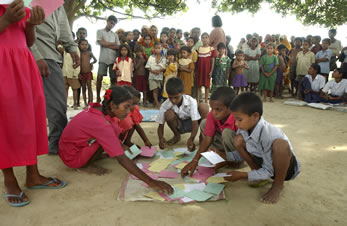
Aims and objectives
The conference aims to achieve the following:
• To highlight and celebrate the success of Asia in reducing poverty and promoting development, to share knowledge and spread the gains of development.
• To identify the key challenges facing countries in Asia for sustaining growth and development in the future
• To build partnerships and an international consensus on priorities for action to meet these challenges and achieve the Millennium Development Goals in Asia.
Promoting growth, ending poverty
As a region, Asia has been extraordinarily successful at tackling extreme poverty in recent years. Over the past two decades, more people have been lifted out of poverty in Asia than in any other region at any other time in history. Much of the progress made so far towards attaining the Millennium Development Goals has been achieved in Asia. There is a real chance that extreme poverty could be eradicated in Asia within the next generation.
Future challenges
Nevertheless, there are challenges and threats to Asian development which could undermine progress towards this goal. Behind the overall picture of success lies a much more complex reality, with different levels of progress both between and within countries in the region. Persistent poverty, inequality and the social exclusion of certain groups are a threat to social cohesion and progress. The deepening and acceleration of globalisation continues to throw up new challenges including issues of access to markets, security and environmental management. In an increasingly interconnected world, Asia's capacity to meet these challenges impact upon us all.
New partnerships for development
Having achieved so much, but with a great deal left to do, there is a need to forge new partnerships between governments, donors and civil society in Asia. To fight poverty effectively, a new model of development cooperation is required, based on mutual interests, trust and accountability, which goes beyond the conventional relationship between aid donor and recipient.
Conference organisers
Asia 2015 is being hosted by:
The Asian Development Bank (ADB)
UK Department for International Development (DFID)
in association with:
Chatham House (Royal Institute of International Affairs)
Institute of Development Studies (IDS)
Overseas Development Institute (ODI)
United Nations Development Programme (UNDP)
United Nations Economic and Social Commission for Asia and the Pacific (UNESCAP)










